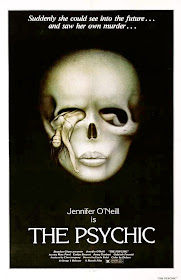A would-be farce that
never achieves liftoff, this comedy is nonetheless a handsomely made film with
a strong cast and a number of mildly amusing moments. Running a brisk 87
minutes, the picture is a trifle containing charms sufficient to engage viewers
who are willing to lower their expectations.
Set in a small American town, the
movie tracks the adventures of three bank officers—Manny Benchley (Richard
Basehart), Jack Stutz (Burgess Meredith), and Julius Taggart (Ned Beatty)—who
discover that $100,000 has disappeared from their bank’s holdings. Jack, the
wily senior member of the trio, suggests an outrageous scheme: Why not stage a
robbery to cover the absence of the money, and then recover the $100,000
through insurance? Despite Julian’s troubled conscience and Manny’s weak
constitution, the trio performs their fake heist, only to discover a new
problem. One of their employees, meek teller Richard Smedley (Paul Sand),
confesses to embezzling the original $100,000 and says he wants to return the
money. Writer-director Joseph Jacoby comes close to making this convoluted
setup work, although his storyline ultimately crumbles beneath the weight of
confusing subplots, incessant logic problems, and underdeveloped characters.
Among other things, the whole business of a romantic triangle between Richard,
ambitious local beauty Cathy Bonano (Charlene Dallas), and neighborhood
preacher Everett Manigma (Michael Murphy) rings false. It’s also distracting
that The Great Bank Hoax is so
reminiscent of Cold Turkey (1971), a
better film about small-town greed that also prominently features a preacher.
Yet The Great Bank Hoax is a good
example of a picture in which the parts are greater than the sum. The scenes
featuring Basehart, Beatty, and Meredith are droll, with each actor
contributing a different tonality; whether they’re attempting a getaway on a
bicycle or negotiating deals in a boardroom, the actors make the most of weak
material. Dallas, Murphy, and Sand are good, as well, though none of their
characters makes much sense. On the technical side, cinematographer Walter
Lassally shoots the picture beautifully, using silky backlights to give the
locations a warm, Norman Rockwell-type glow. Also making his presence felt is
noted film editor Ralph Rosenblum, who cut most of Woody Allen’s ’70s movies. Based
on his other work, it seems fair to credit Rosenblum with the picture’s
imaginative intercut sequences and vibrant visual juxtapositions. Especially
after the plot becomes too labored to follow, the presence of bright visuals
and zippy pacing helps keep the focus on patter and performances.
The Great Bank Hoax: FUNKY
















